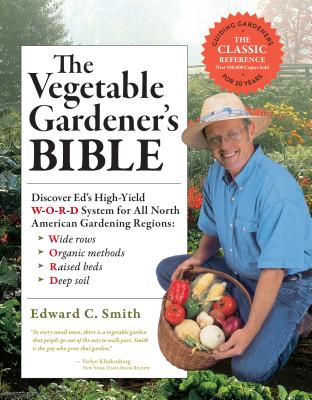
Edward Smith’s The Vegetable Gardener’s Bible is a must have for those wanting to learn everything there is know about gardening and self-sufficient gardening practices.
This easy to read book gives first hand knowledge on how to grow a successful garden. Many who have read his best selling book are already adopting his gardening methods.
Methods such as the W-O-R-D system:
Wide Rows
Organic Methods
Raised Beds
Deep Soil
His chapter on nurturing soil has been a great source of knowledge for me, and my garden has prospered as a result. Edward C. Smith has created a book that takes all the secrets out of gardening. For many of the gardening novices, this book has tips and suggestions that will get vegetables to grow anywhere in North America. Here is a checklist from Smith’s book for a healthy garden:
- Put your garden where there’s enough sunlight, especially in the morning, and adequate air circulation, to dry the dew quickly. Diseases do better in a damp environment.
- Build and maintain a living soil, full of the microbes that help plants to grow and protect them against diseases.
- Rotate crops so that disease-causing organisms that live in the soil won’t find their host crop when spring arrives.
- Plan varieties that resist whatever diseases are likely occur in your gardening neighborhood.
- Intercrop whenever possible.
- To keep diseases from spreading, don’t work in the garden when plants are wet.
- Keep at least a 1/2 inch (1.25 cm) layer of compost on growing beds all the time. Compost not only ensures a steady flow of balanced nutrients to the plants but also has been shown to inhibit many plant diseases.
- Make sure plants have enough water. By the time it begins to look droopy, a plant is already stressed, and a stressed plant is an open invitation to pests and diseases.
- Use mulches and row covers to maintain soil and air temperatures within the plant’s preferred range.
